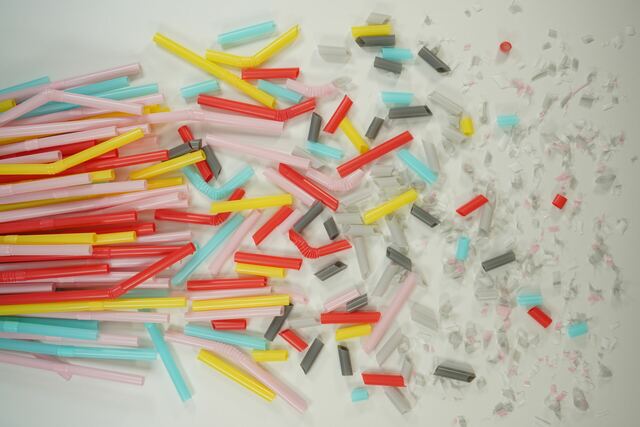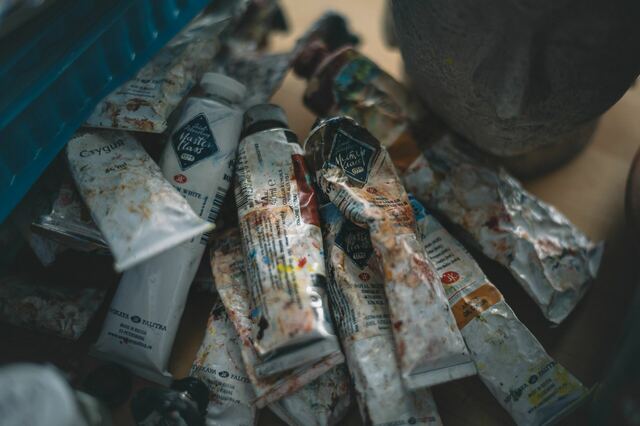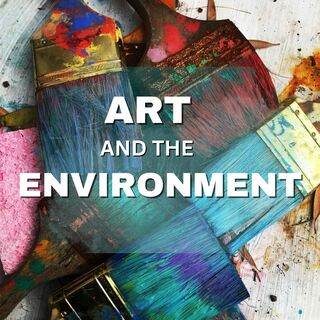Environmental Impact of Artists Paint and Microplastics: How to Help
Artists, beyond our creative canvases, are responsible for the world around us. Especially regarding microplastic pollution and the hazards of oil paint toxicity, we'll investigate how acrylic and oil paints can affect the environment in this blog post.
Taking even small steps as an artist in New Zealand or anywhere in the world, to reduce environmental issues is essential, so even if you think it's only one paint down the drain or just one solvent use, think again. It does matter and it does help in the long run.
The aim is to explore the impact of these artistic materials and offer guidance for artists looking for more eco-friendly options.
Does Paint Contribute To Microplastics?
Yes, it can. Many types of paint, including acrylics, might add to the issue of microplastic contamination. While the main ingredients in acrylic paint are water, pigments, and acrylic polymer emulsion, it's essential to know that certain commercial acrylic paints may contain tiny plastic particles in additives or fillers.
These minuscule plastic bits can accidentally end up in the environment when we clean brushes or during other parts of the painting process. This contributes to the more significant problem of microplastic pollution that affects our environment.

Is Acrylic Paint Harmful To The Environment?
Well, not really by itself. But it's essential to be careful how we use and dispose of it. The biggest source of tiny plastic bits called microplastics in our environment comes from larger plastic items like bottles and packaging breaking down over time. Acrylic paint isn't the main culprit here.
Acrylic paint is primarily made of water, pigments, and acrylic polymer emulsion, which isn't toxic. However, some acrylic paints you can buy may have tiny plastic pieces called microplastics in additives or fillers. These little plastic bits can accidentally get into the environment when we clean our brushes or throw away leftover paint.
So, while acrylic paint isn't the main reason for microplastic pollution, we should still be careful with how we use and get rid of it. We can do our part by disposing of paint responsibly, recycling when possible, and considering eco-friendly options. This way, we can be more environmentally friendly in our artistic pursuits.
So Is Acrylic Paint Environmentally Friendly Then?
Well, it's kind of in the middle. Acrylic paint is a type of water-based paint, and a big part of it is made of something called acrylic polymer emulsion, which is like a plastic binder. So, it's not entirely "eco-friendly" because it has this plastic stuff in it. However, when we look at it compared to other paints like oil paints, acrylics are better for the environment.
One of the reasons why acrylics are more eco-friendly is that they don't need as many harmful chemicals like solvents. You can clean up your brushes and spills with water instead of using dangerous solvents. This is good because it reduces the need for those harmful chemicals that can hurt the environment.
So, while acrylic paint isn't entirely green, it's a better choice for the environment than other paint types. It's a good option for artists who want to be more environmentally friendly in their work.
What Is The Most Environmentally Friendly Paint For Artists?
If you're an artist aiming to minimise your environmental impact, there are several eco-friendly paint options worth considering:
Watercolour Paints
Watercolors are an excellent choice for environmentally conscious artists. They are non-toxic and easy to clean up since they mostly rely on water. Additionally, watercolour paintings are typically done on paper, which is a biodegradable and renewable resource. This means that the environmental impact of watercolour paintings is relatively low compared to other mediums.
Gouache Paints
Gouache paints share similarities with watercolours but offer greater opacity and richer colour coverage. Like watercolours, gouache paints are water-based, which makes them a relatively eco-friendly choice. They also don't contain plastic binders, which can be found in some acrylic paints.
Natural Pigments
Artists who prioritise environmental sustainability can take their commitment a step further by creating their own paints using natural pigments. These pigments can be sourced from minerals, plants, or even some insects. Combined with eco-friendly binders like egg tempera or gum arabic, they result in paints entirely free of synthetic polymers. This approach allows artists to control their materials completely and reduce their reliance on manufactured, potentially harmful pigments.
Oil Paints with Eco-friendly Solvents
For artists dedicated to oil painting, eco-friendly solvents and mediums are available that significantly reduce the environmental impact of working with oils. Traditional oil painting often involves using toxic solvents and chemicals, which can harm both the artist and the environment. Eco-friendly alternatives provide safer options while maintaining the qualities of oil painting that artists appreciate.
For oil painters, going green without compromising your art is vital. Traditional oil painting often relies on harmful solvents and chemicals. Yet, eco-friendly options offer both safety and the cherished qualities of oil painting.
Thinning Oil Paint:
You can improve paint flow by using Walnut Oil or Linseed Oil (preferably Walnut Oil). Then, add a dash of Walnut Alkyd Medium to speed up drying.
Brush Cleaning and Solvents:
Opt for eco-friendly choices like Walnut Oil or artists' Soap. They're not only practical but also kind to the environment. Wipe off excess paint, then rinse your brush using the chosen alternative. Finish with a gentle soap and water wash.

Oil Paints with Toxic Additives
Avoid oil paints with toxic heavy metals, such as Toxic Heavy Metals in Pigments: Beware of Their Effects.
Artists should be aware of pigments containing toxic heavy metals, as their usage can have harmful consequences.
Here is a list of pigments and the potential health risks they pose:
Antimony - Naples Yellow, Antimony, Antimony Red:
-
Prolonged exposure to antimony can harm the lungs.
Arsenic - Orpigment, Realgar, Conichalcite:
-
Acute arsenic poisoning can be fatal, and long-term exposure may lead to cancer.
Borates - Borax, Boric Acid, Viridian Green (chromium oxide hydrate green):
-
Borates pose potential risks if ingested, such as diarrhea, shock, vomiting, and death.
Cadmium - All cadmium pigments 21010 to 21540 and 42050, 44500 and 44510:
-
While the risk from the cadmium pigment itself is low, burning cadmium pigments creates toxic by-products you should be aware of.
Cobalt - All cobalt blue, green, yellow, violet, smalt:
-
Cobalt is considered toxic in some countries and is harmful if inhaled or ingested, with the potential for progressive effects.
Copper - Azurite, Malachite, Chrysocolla, Verdigris, Egyptian Blue, Han Blue, Ploss Blue, Blue Verditer, Phthalo Blue and Green:
-
These pigments can be harmful if inhaled or ingested.
Lead - Naples Yellow, Lead White, Red Lead, Massicot, Zinc White (white seal), Galena, Colored glass powder, Lead Tin Yellow:
-
It is possible to develop lead poisoning and nerve damage from continued exposure.
Manganese - Manganese Brown, Black, Grey, Violet, Purple, Umber:
-
Continued exposure to manganese pigments can lead to nerve damage.
Mercury - Vermilion natural and synthetic:
-
Continued exposure to mercury can lead to poisoning as well as nerve damage.
Nickel - Nickel titanium yellow, Indian yellow imitation:
-
In addition to causing kidney damage, continued exposure can also result in allergic reactions.
Therefore, always wear latex gloves if you must use these pigments. You can make your paint by mixing natural earth pigments with walnut oil for a toxin-free approach.
Earth Pigments:
Explore earth pigments for a wide range of colours and remarkable durability. They're a great alternative to traditional tube paints, free from chemical fillers, making them lightfast and vibrant.
Paint Mixing:
Creating your own paint can be really quick. Place pigment on a glass palette, add drops of walnut oil and mix with a palette knife. A glass muller can help, but it's not essential.
Hand Cleaning:
When it comes to cleaning your hands, try using artists' soap like Da Vinci Hand Soap, designed for artists. It's available at most art shops and effectively cleans your hands without being harsh.
Then There's our Health
PFAS (per- and poly-fluoroalkyl substances)
Conclusion: Navigating Art and Environmental Concerns with Ease
As artists, our journey involves embracing our creative vision while being mindful of our planet's well-being. Be it acrylic or oil paints, each bears its environmental considerations, whether tiny plastic particles or toxic heavy metals.
We, the creators, have the power to shape our art in harmony with the world around us.
While we paint, sculpt, and shape, let's remember our dual role as guardians of art and the environment. We harmonise art with a sustainable world by choosing eco-friendly paints, adopting eco-conscious practices, and minimising our environmental impact.
This harmony ensures that art remains a testament to human creativity and a symbol of our commitment to a beautiful, eco-conscious world for future generations.
As an artist in New Zealand I am keen to share my help and advice on helping future generations help save our planet.
